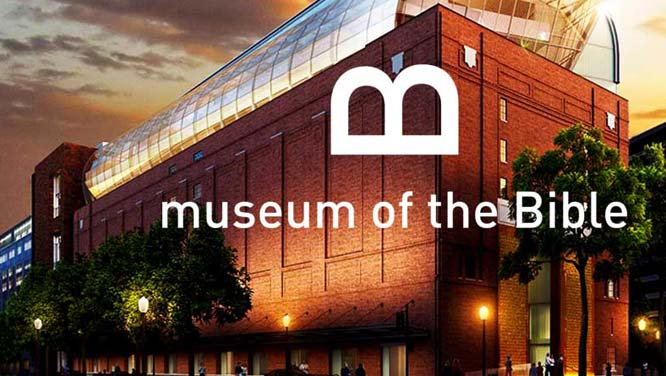
It brings to museum design the sophisticated marketing intelligence of the Oklahoma City-based Green family, who have used a fortune made from the Hobby Lobby retail chain to promote evangelical Christian causes. Their latest venture is a museum that offers a one-stop-shopping cultural experience, with history, art, architecture, theater and music conveniently packaged under one roof.
The new attraction is an up-to-date version of an old-fashioned museum, telling linear stories in a complex and detailed way. It doesn't foreground trendy ideas about multiculturalism, and it isn't "thematic," or focused on broad ideas at the expense of chronological clarity.
It gives a straightforward account of American history, from the first colonists to the civil rights era and beyond, through the prism of the Bible, but in a way that many visitors will likely find more compelling and accessible than the dense cultural stew on view at the Smithsonian's Museum of American History. When dealing with the complexities of the Bible's history, the curators don't scant the facts or lapse into the useless generalities of other, more populist museums.
The institution's leaders have stressed their desire for a professional and unbiased presentation. "We want it to be as accurate as possible, as fair as possible, and if you will, as nonsectarian as possible," said Tony Zeiss, the museum's executive director.
Museum leaders made a prescient decision in 2012 to buy the 1923 Terminal Refrigerating and Warehousing Co. building in Washington, D.C., a site near the Mall and ripe for development as a tourist hub. By adding a glass atrium and two floors atop the old structure, and connecting the floors with a sun-drenched stairwell, the architects of SmithGroup turned the largely windowless structure into a successful museum space spread over seven public floors, with a rooftop restaurant and garden and multiple theaters and event spaces.
Two floors include exhibitions that traffic mainly in the substance of biblical history, while a third floor is devoted to immersive rooms with a stronger admixture of entertainment. There is a re-creation of a Christian-bible-era village with faux olive trees and a mikvah, or ritualarium, and a multimedia space with theaters that chronicle the early history of the Jewish people. But both the traditional and immersive exhibitions start with unstated assumptions: that the Bible is the most important book in the world, that there is concrete archaeological evidence to explain its origins, that it has been transmitted through the ages with remarkably accuracy, and that it is fundamentally a blessing to mankind.
Debates about the meaning of the Bible are confronted openly and without bias, so long as they don't undermine those assumptions. The "Impact of the Bible" floor acknowledges the use of the Bible to defend slavery, as well as the role it played in the abolitionist movement. A descriptive panel for a King James Bible edited for use by enslaved people notes that what has been excised - passages that might have inspired resistance to authority --- makes the book "deeply manipulative."
Curators admit that the Bible has been misused, but they consistently come down on the side of its positive impact. In an exhibition on science and the Bible, they cite Johannes Kepler to justify not just the importance of the Bible to scientific inquiry, but also the alignment of biblical ideas and the rational order of the universe: "G0D wanted us to recognize [the laws of nature] by creating us after his own image so that we could share [H]is own thoughts," said the Renaissance mathematician and astronomer.


 Contact The Editor
Contact The Editor
 Articles By This Author
Articles By This Author